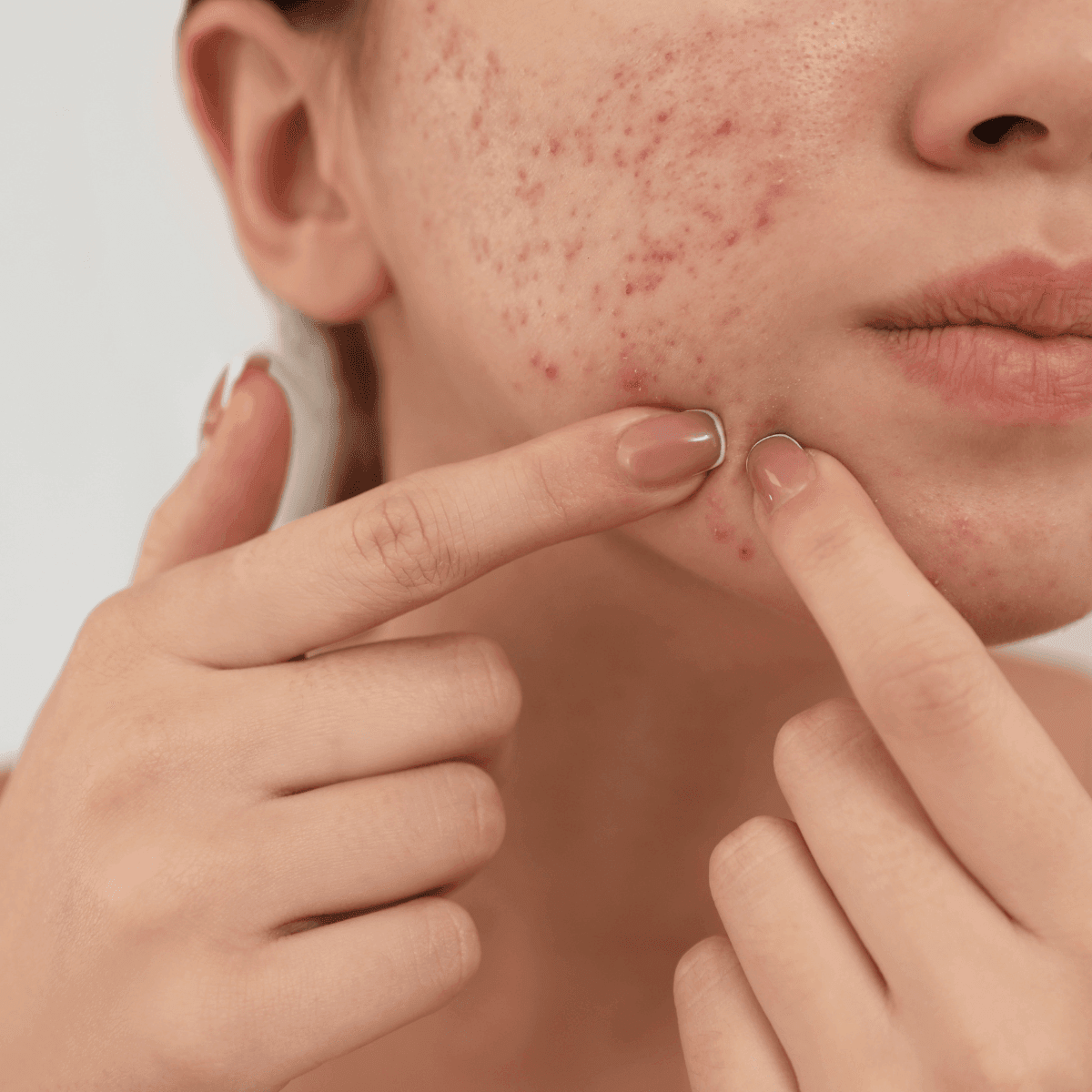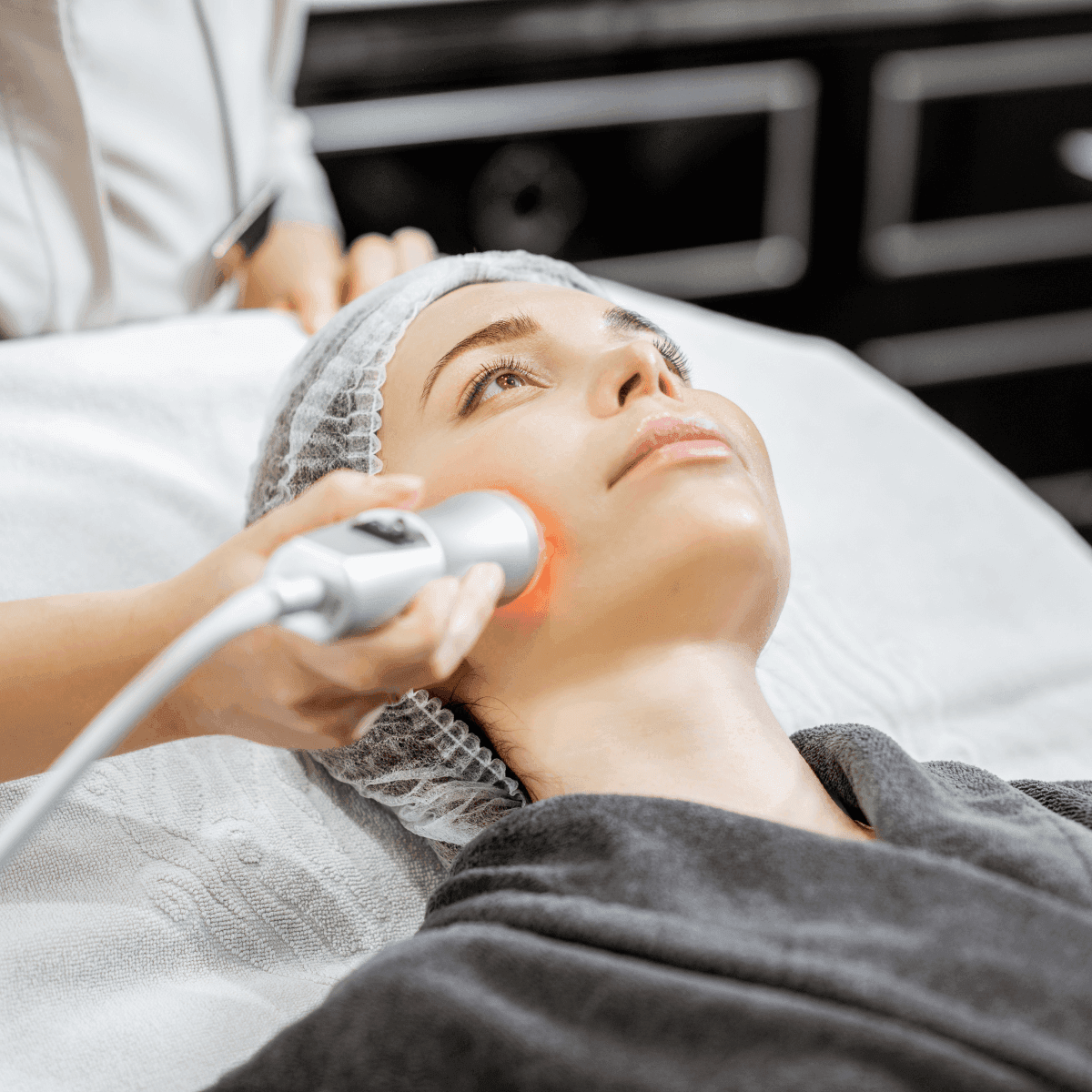In the quest for clear, radiant skin, tackling conditions like hyperpigmentation and rosacea often requires more than a one-size-fits-all solution. Complementing advanced laser therapies with hydrating or anti-inflammatory beauty procedures unveils a new path to managing these common skin issues effectively. In this article, we’ll guide you through the major benefits that a combined treatment approach can provide for your skin.
Hyperpigmentation
Skin hyperpigmentation, characterized by darkened patches on the skin, is a common condition affecting millions worldwide. It occurs when an excess production of melanin, the pigment responsible for skin color, leads to uneven skin tone. The process involves overactive melanocytes, cells in the skin that produce melanin, often triggered by various factors.
Causes and processes
One primary cause of hyperpigmentation is excessive sun exposure. Ultraviolet (UV) radiation stimulates melanocytes to produce more melanin as a protective response, resulting in sunspots or age spots. Hormonal changes, particularly in women, can also trigger melanin overproduction, leading to melasma. This condition often emerges during pregnancy or with the use of hormonal contraceptives. Post-inflammatory hyperpigmentation (PIH) occurs after skin injury or inflammation, such as acne or eczema, causing dark spots as the skin heals.
Prevalence and risk factors
Hyperpigmentation affects individuals of all ethnicities, but it is more prevalent in people with darker skin tones due to their higher melanin levels. Risk factors include prolonged sun exposure without protection, hormonal fluctuations, certain medications, and skin injuries. Genetic predisposition also plays a significant role, as does exposure to environmental pollutants.
Understanding the underlying causes and processes of hyperpigmentation is crucial for effective prevention and treatment. Regular use of sunscreen, protective clothing, and appropriate skincare can mitigate risks, while targeted treatments can help manage and reduce the appearance of dark spots.

Rosacea
Rosacea is a chronic skin condition characterized by facial redness, visible blood vessels, and sometimes acne-like bumps. It predominantly affects the central part of the face, including the cheeks, nose, forehead, and chin. The exact cause of rosacea remains unclear, but it involves a complex interplay of genetic, environmental, and immune system factors.
Causes and processes
The primary process in rosacea involves the dilation of small blood vessels in the face, leading to persistent redness and a flushed appearance. This can be triggered by various factors, including sun exposure, hot beverages, spicy foods, alcohol, stress, and temperature extremes. Inflammation plays a key role, with the immune system reacting abnormally to these triggers, causing swelling and redness. Additionally, certain microorganisms, like the Demodex mite and the bacteria Helicobacter pylori, are linked to the condition, potentially exacerbating symptoms.
Prevalence and risk factors
Rosacea affects an estimated 5-10% of the population, predominantly individuals between the ages of 30 and 50. It is more common in fair-skinned people of Northern European descent but can affect all skin types. Women are more likely to develop rosacea than men, though men often experience more severe symptoms. Other risk factors include a family history of rosacea, having light skin that tends to blush easily, and a history of acne.
Having a good grasp of the causes and triggers of rosacea is essential for managing the condition. While there is no cure, identifying and avoiding personal triggers, along with using appropriate skincare products and medical treatments, can significantly reduce symptoms and improve quality of life.
Hyperpigmentation laser treatment
Laser therapies have emerged as a powerful solution for treating hyperpigmentation, offering precise, effective, and non-invasive results. By targeting excess melanin deposits in the skin, lasers break down pigment particles, which are then naturally eliminated by the body. This leads to a more even skin tone and a reduction in dark spots.
Benefits of laser therapies
Laser treatments offer several benefits for hyperpigmentation. They are highly targeted, reducing the risk of damage to surrounding tissue. The procedures are typically quick, with minimal downtime, allowing patients to resume their daily activities shortly after treatment. Additionally, laser therapies can address various types of hyperpigmentation, including sunspots, melasma, and post-inflammatory hyperpigmentation.
Enhancing results with combined treatments
To maximize the effectiveness of laser therapies, a combined approach is often recommended. Supplementing laser procedures with other treatments can enhance skin rejuvenation and overall results. Mesotherapy involves injecting vitamins, enzymes, and other nutrients into the skin, promoting healing and regeneration. Microneedling, which uses fine needles to create micro-injuries, stimulates collagen production and improves skin texture.
Hydrating therapies, such as hyaluronic acid treatments, help maintain skin moisture and suppleness, while Platelet-Rich Plasma (PRP) therapy utilizes the patient’s own blood plasma to accelerate healing and enhance skin renewal. These complementary treatments can amplify the benefits of laser therapies, leading to more comprehensive and lasting improvements in skin appearance.
By combining laser therapies with these innovative treatments, individuals can achieve a brighter, more even complexion, effectively tackling hyperpigmentation from multiple angles.

Rosacea laser treatment
Laser therapies have proven to be a groundbreaking approach for managing rosacea, too, offering significant relief from its persistent symptoms. Lasers work by targeting and reducing the dilated blood vessels beneath the skin’s surface, diminishing redness and inflammation effectively. One of the most advanced platforms in this field is the Harmony XL Pro, which has set new standards in rosacea treatment.
Benefits of laser therapies for rosacea
Laser treatments offer precision and efficiency in reducing the visible blood vessels and redness associated with rosacea. The procedures are minimally invasive, with little to no downtime, making them a convenient option for patients. Moreover, laser therapies provide long-lasting results, significantly improving skin appearance and patient confidence.
The Harmony XL Pro platform
The Harmony XL Pro platform is renowned for its versatility and effectiveness in treating various skin conditions, including rosacea. It employs advanced laser technology to target blood vessels selectively, reducing the appearance of redness and flushing. This platform ensures a comfortable treatment experience with minimal side effects, making it a preferred choice among dermatologists and patients alike.
Enhancing results with a combined approach
To optimize the benefits of laser therapies, incorporating a combined treatment regimen is highly recommended. Using antibiotic topical creams can help control the bacterial component of rosacea, while other anti-inflammatory products can reduce overall skin irritation and redness. This multi-faceted approach not only enhances the efficacy of laser treatments but also helps maintain results over time.
By integrating the advanced capabilities of the Harmony XL Pro with supportive topical treatments, individuals can achieve more comprehensive management of rosacea, leading to clearer, healthier skin.
Remember, consistent treatment and regular visits to expert dermatologists are essential for tackling skin concerns such as hyperpigmentation and rosacea. Therefore, stay patient and trust the professionals to guide you on your journey to radiant, healthy skin for truly stunning and long-lasting results.


